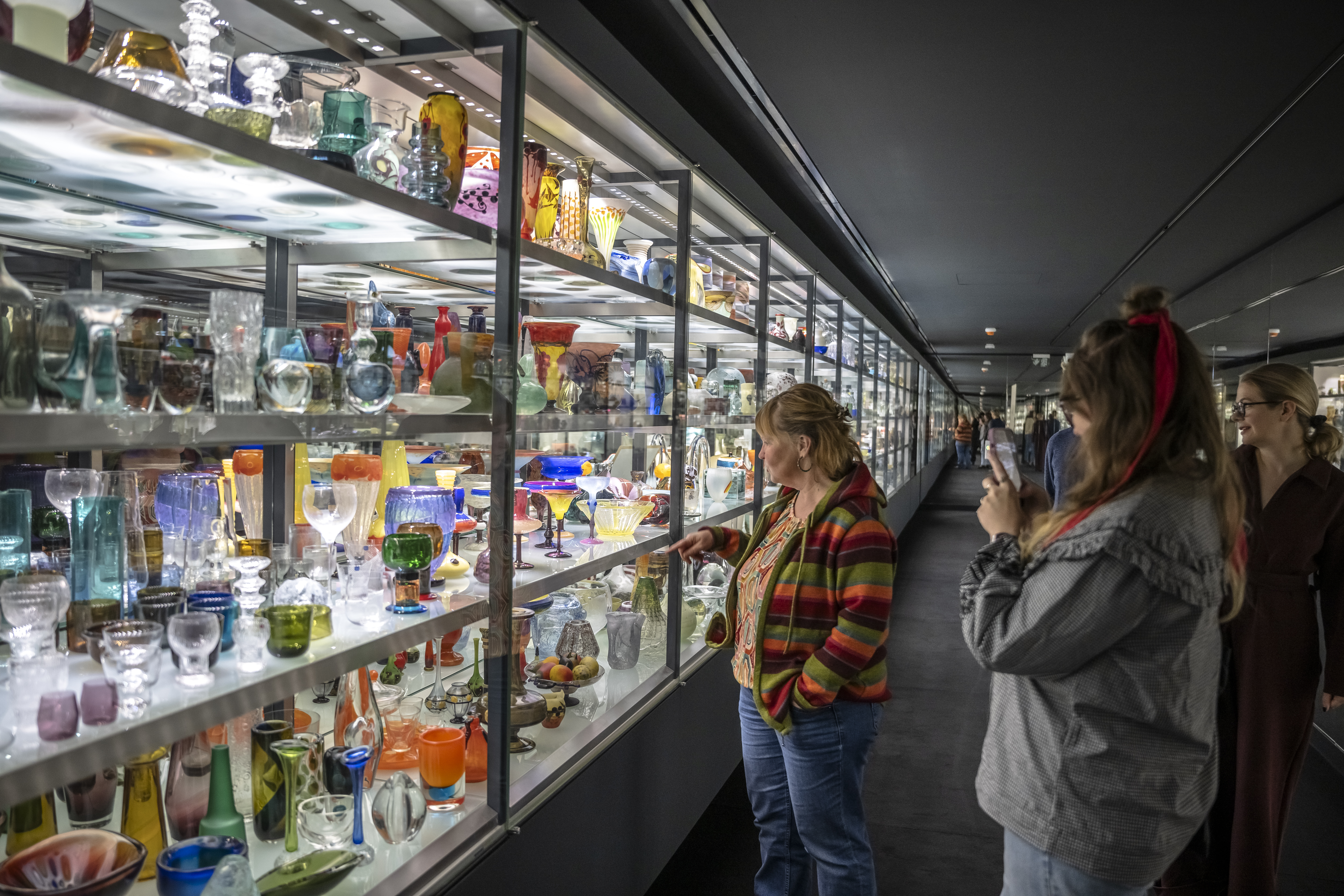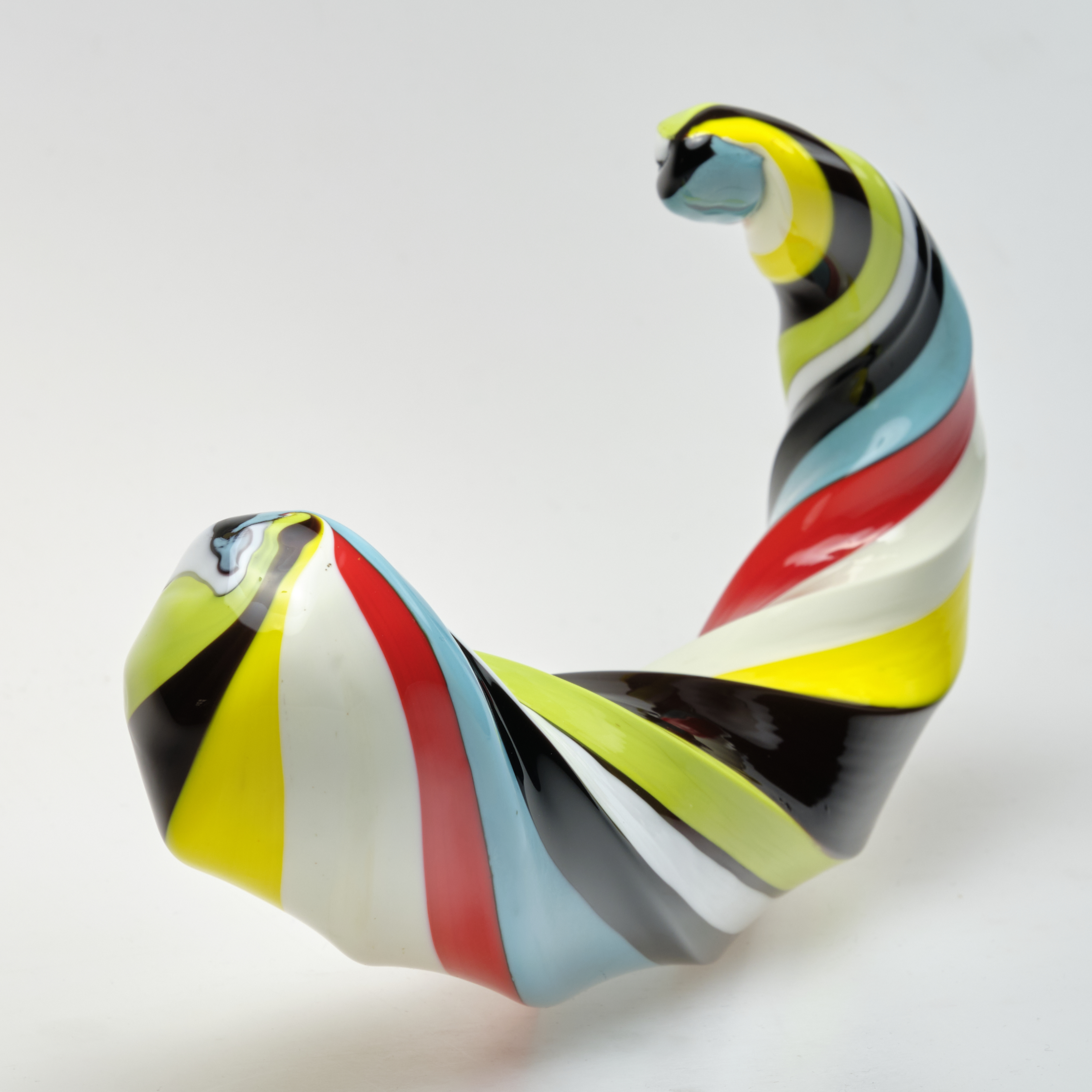Glass Collection
Following extensive modernization, one of the world’s largest glass collections is on display again: Over 1,500 exhibits from the collection of around 13,000 objects will provide an insight into the history of glass art – starting with antiquity, through the Middle Ages to contemporary glass objects. The special exhibition Mythos Murano explores the secrets behind the glass objects from the Venetian lagoon island.


When the first glassmakers fused sand and ash, the result must have seemed like a miracle. They had succeeded in imitating radiantly colourful gems using simple raw materials. Since then nearly 4,000 years have passed, and to this day glass has remained a fascinating material in the realms of both high technology and art.
A particular strength of the Glass Collection lies in its comprehensiveness, which provides an almost complete overview of the history of glass art from Antiquity to the present. Many of the pinnacles in the development of glass art are represented by unique principal works held here. Further, a number of areas have become a focus:

- Antiquity: Glass from the Roman period, approximately from 50 to 450 AD, predominantly from workshops in the Middle East
Islam: the Middle East from the 6th century until approx. 1400
Middle Ages: one of the finest collections world-wide of utility and luxury glass from 500 to 1500
1500-1880: masterpieces of European glass art from the Venetian Renaissance, cut glass from the Baroque period through to Biedermeier and Revivalism
Art Nouveau: Works of French Art Nouveau, approx. 1885-1904, are a particular focus of the Glass Collection
1920–1960: the ascent of art glass-making from the 1920s onwards in Murano, the Netherlands and Scandinavia
Glass design: documentation of European glass design after the Second World War
Studio glass since 1962 and contemporary art: untrammelled artistic approaches to glass, documented by a very comprehensive stock of approx. 600 works

An estimated 400 individuals and institutions have bestowed gifts of glass to the Glass Collection since its inception. Thus, the quality of the collection is indebted to a considerable extent to the private commitment of our patrons. First and foremost, it draws from the collection of the Düsseldorf architect Helmut Hentrich (1905–2001), comprising some 3,000 objects with particular emphasis on Art Nouveau glasses. Assuring the museum’s world renown in this field once and for all was the addition of the collection of Art Nouveau glass of the Heidelberg entrepreneur Gerda Koepff (1919-2006). More recently, the collection of the Hamburg pharmacist Frauke Thole has placed an additional focus on the oeuvre of the Czech sculptor Jan Fišar (1933–2010).

Rhino Palast
Artist and illustrator Christoph Niemann has developed another special room for children exclusively for the Kunstpalast. In the Rhino Palace, young and old can go on a discovery tour, test the limits of their perception and playfully conquer the museum for themselves. Hidden behind the small doors with low handles and the Rhino logo are various optical illusions that invite interaction and make references to the Kunstpalast collection. In the new “Facets” room, your own body and movements are divided into many small surfaces and reflected, similar to cut glass. Visitors can discover their favorite facet using the changing projections.Learn more

New features of the Kunstpalast app
With information on over 100 works from the glass collection, including over 20 multimedia stations (audio and video) and a new augmented reality feature on the window of the Villa Possehl, Travemünde, 1904 (design) by Henry van de Velde, the Kunstpalast app offers visitors an exciting digital experience.
Highlights

The Murano Mythos
In a newly created exhibition area of our glass collection, annually changing themed exhibitions will be shown from now on. It all starts with The Murano Mythos: For 700 years, the small lagoon island of Murano near Venice has been the epitome of great glass art.To the exhibition
Image Credits
Image Credits







